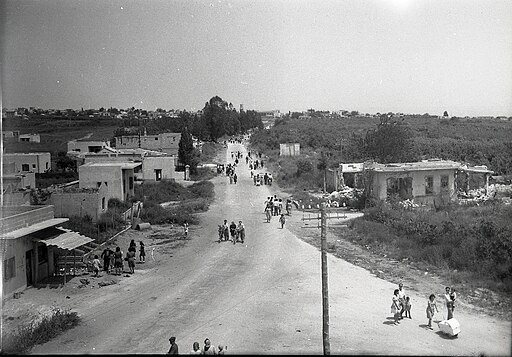Israel, Palestine, and the not so eternal boundary issue.

The village of Kfar Shalam (כפר שלם; سلمة) in 1948 after the forced expulsion of Palestinians
and before the arrival of Jewish settlers during the 1948 Arab-Israeli War.
Jacob Sagers – Hamas’s attack on Israel and the Israeli government’s subsequent siege and rocket barrage on Gaza have dominated international news for the past few weeks. The scale of the conflict is not limited to the region, with worldwide media extensively reporting on unfolding events. During the previous few days, boundaries and aid crossing have come to light as Palestinians in Gaza are in a precarious situation. Yet, the role of boundaries in its origins remains largely ignored.
Understanding the conflict's context requires thinking about boundaries – or the dividing line between countries and entities – and their vital role in the current conflict. A common misconception is that the Palestinian-Israeli conflicts have existed for hundreds of years. A clearer starting point emerges when examining the end of World War 1, British colonialism, the growth of Zionism – the movement to create a homeland for the Jewish people in Palestine – and the creation of the Palestine Mandate in 1923. Modern-day Israel's boundaries are marked by the Mandate and Jewish immigration to Palestine increased with British occupation. The subsequent UN partition plan in 1947, the creation of Israel in 1948, and expulsion of around 700,000 Palestinians from their homelands, named al-Nakba (النكبة), marks the relatively recent start of boundary issue surrounding the conflict.
Boundaries play a vital role in people’s everyday lives. It shapes their attachment to their country, or national identity, amid their relationship to their heritage and status within politics. The complex system enacted throughout Palestine, with Israeli occupation zones in the West Bank and Gaza’s besieged autonomy, leaves Palestinians disjointed from their families, culture, and identities. The inability of Palestinians to travel within what was supposed to be their own state has left many disgruntled. Furthermore, their limited sovereignty has left Gaza reliant on aid and imports from Israel and Egypt, granting Hamas and Israel increased control over the territory and Palestinian civilians in dire straits. Meanwhile, Israel lacks recognition as a legitimate country from many states in the Middle East due to the boundary problem. The right to land and existence is vital for both sides of the conflict. Whether a two-state solution is possible remains uncertain, but resentment and disagreements over boundaries have left the region in conflict.
Picture Credit: Photo distributed under Creative Commons Attribution 4.0 International License in Israel. Source

